Available translations: Chinese (thanks to Chen Feng) | Portuguese (thanks to Marcelo Cruz dos Santos) | Russian (thanks to Sergey Loy)
send us your translation
Writing a thesis is a complex task. You need to find related literature, take notes, draft the thesis, and eventually write the final document and create the bibliography. Many books explain how to perform a literature survey and how to write scholarly literature in general and a thesis in particular (e.g. [1-9]). However, these books barely, if at all, cover software tools that help in performing these tasks. This is surprising, because great software tools that can facilitate the daily work of students and researchers are available and many of them for free.
In this tutorial, we present a new method to reviewing scholarly literature and drafting a thesis using mind mapping software, PDF readers, and reference managers. This tutorial focuses on writing a PhD thesis. However, the presented methods are likewise applicable to planning and writing a bachelor thesis or master thesis. This tutorial is special, because it integrates the management of PDF files, the relevant content in PDFs (bookmarks), and references with mind mapping and word processing software. To make the tutorial better understandable, we provide many examples in which we assume that you want to write a PhD thesis about academic search engines. Please note that
- All tools recommended in this tutorial are free and open source (except Microsoft Word)
- All tools presented in this tutorial are based on Java and run on Windows, Linux and MacOS (again, except Microsoft Word)
- All tools used in this tutorial may be substituted:
- Docear may be substituted with FreeMind, MindManager, XMIND and most other mind mapping tools allowing to link PDF files
- Foxit Reader may be substituted with Adobe Acrobat Reader or PDF XChange Viewer.
- JabRef may be substituted with any other reference manager supporting BibTeX, e.g. BibDesk, Referencer and Mendeley
- Microsoft Word may be substituted with OpenOffice, LaTeX or any other word processor that supports BibTeX out of the box or through plugins
As a bachelor or master student, completing your senior thesis will dominate your life for months. As a PhD student, you will spend years on compiling your PhD thesis. We highly recommend reading this and other tutorials to find the process that works best for you to organize your literature, to manage your references, and to write your thesis. Spending a few hours now will save you days, if not weeks later. This tutorial will be updated from time to time to consider the latest features of the tools presented here.
Last update of this tutorial: November 2013
This tutorial is divided into three parts. The first part explains how to manage literature. The second part shows how to draft a thesis. The final part covers how to write a thesis, which includes the management of references and the creation of the bibliography.
Before we start, we present some user feedback for our software Docear and this tutorial. We hope it motivates you to complete the entire tutorial :-).
You have read my mind. You have put into practice what I could envisage yet not even come close to develop.
You are helping to tackle the biggest obstacle to my research
I really like SciPlore’s approach. Connecting papers through a mindmap is genious!
I’m in the middle of my PhD and was becoming overwhelmed with the amount of information I need to manage. Nothing else was really cutting it for me and I stumbled on Sciplore.
Great software! Trying to get my adviser and all the graduate students in our lab to start using SciPlore. Keep up the efforts!
I very much enjoyed using Sciplore and was very impressed by its performance and options.
Congratulations on a great time saver and program to make PDF Bookmarks useful.
I’d like to thank you for the great work you’re doing.
Thank you very much for the excellent software. SciPlore has helped me organise my notes and research while undertaking my Masters degree.
I was greatly surprised to find SciPlore, and it seemed to be exactly what I needed for my work
Just wanted to say that SciPlore is a wonderful program. I use it to organize my thoughts and my research. Can’t wait to see what’s coming!
Thanks for making SciPlore!
You may also want to check out this video of Docear, which gives an overview of the great features Docear offers for managing your academic literature.
Part I: Literature Management
Keeping track of related work in your field is key to writing a good thesis, especially for writing a good PhD thesis. This task entails knowing about the relevant studies, results, facts, and ideas in your field. Keep in mind that by the end of your literature review for your PhD thesis you will have read or at least skimmed through hundreds of papers and books. Without using tools, you must be a genius to remember every interesting fact and idea you have read. Before the computer-age, academics relied on index cards, (post it) notes, highlighting pens, indices, etc. With computers, and especially mind mapping software, new possibilities evolved. In this part of the tutorial we explain how use academic search engines to find relevant literature. Then we show you how to create summaries of your PDFs using bookmarks and how to keep an overview of all important information in a mind map. By the end of this part, your mind map will contain literally all information that you have considered to be important. Whenever you want to know something, you can look it up in your mind map, and read about it in more detail by clicking on the link to the PDF.
Searching for (Electronic) Literature
Knowing what others have done in your field of research is a prerequisite for any thesis. But how to find this related work? Due to computers and the internet, searching for literature has changed dramatically over the last years. Instead of using library catalogues, students can use full-text search offered by academic search engines and databases such as Google Scholar and ACM Digital Library. In addition, academic search engines usually offer sophisticated ranking algorithms that help in finding the most relevant documents [10-12]. Dozens of academic search engines exist. Some focus on specific disciplines such as computer science, while others try to cover several or even all academic disciplines. For computer science, popular academic databases include Springerlink, ACM Digital Library, IEEE Xplore, ScienceDirect and to some extent Emerald Insight (Wikipedia provides you with an extensive list of available resources). All these databases require a subscription to access their content. If you are lucky, your institution has an agreement that allows you to access some or all of these databases for free. Ask your supervisor or the staff in your institution’s library about which databases you can access. Free alternatives to commercial literature databases include CiteSeer, SciPlore’s collection, which is accessible through Docear. Often, but not always, Google Scholar provides a free download link to articles in its listings. In this tutorial, we will focus solely on the management of electronic literature.
Storing Documents in a Folder Structure
Most academic search engines and databases offer to download scholarly literature as PDFs. The simplest way to store (and retrieve) these PDFs is by organizing the PDFs in a reasonably structured folder system. Each PDF can be stored in one folder labelled with an appropriate descriptor. Assigning meaningful file names, such as the article’s title, to PDFs is generally helpful. If one document falls into two or more categories, most operating systems allow creating a shortcut or alias for a file (see picture). Some users consider this approach as being too structured and prefer tagging instead.
Tagging
Tagging allows assigning multiple keywords (tags) to a file independent of the file’s physical storage location. Based on these tags, users can retrieve the files from their hard drive. Popular desktop tagging tools include Tag2Find, iTag, and Punakea. There are also services that allow online tagging and storage of academic articles, e.g., CiteULike or Bibsonomy. However, the approach we present in this tutorial focuses on desktop tools and, more importantly, neither folder structures, nor tags are necessary. Of course, a good folder structure never hurts, but it is not a requirement.
Storing Files in a Single Folder
Especially at the beginning of a PhD, you should use academic search engines to search for the most relevant keywords in your field and store any paper you get on your hard drive. If you wanted to do a PhD about academic search engines, starting your research by searching information about Google Scholar, one of the leading academic search engines, might be useful. Let’s assume you have found a hand full of interesting PDFs and stored them in c:\literature\ Don’t spend too much time on judging the relevance of a PDF. If the title or abstract sound interesting, store it.
Keeping Track of Important Information in PDFs
What you really need to know as a researcher is: Where have I read some information? Information for which you forgot the origin is worthless or even harmful to your thesis, because you may inadvertently plagiarize if you present certain information without proper attribution. You will have to reference the origin of information taken from other sources, ideally with a page number. As a first step, PDF readers are perfect to keep track of a PDF’s most important information. You need a PDF reader that can create bookmarks, highlight passages and create annotations. For best compatibility with Docear, we recommend the free version of PDF XChange Viewer. However, the free Foxit Reader or Adobe Acrobat Reader will do, too. Now, whenever you read an interesting PDF, you create a bookmark for every statement that might be interesting for your thesis. We would also suggest highlighting the interesting text directly in the document. Have a look at the picture.
This is the PDF of an article titled “Academic Search Engine Optimization (ASEO): Optimizing Scholarly Literature for Google Scholar and Co.”. It is about how to get your papers indexed and well ranked by academic search engines such as Google Scholar. If you write your thesis about academic search engines, it might be interesting to keep in mind that this paper is the very first paper about academic search engine optimization. Additionally, the definition of “academic search engine optimization” might be relevant for your thesis. Therefore you create a bookmark for each of this information (see the picture). How detailed you create your bookmark structure is up to you. In the very beginning of your literature research, creating just one bookmark that briefly describes the paper (e.g. “first paper about academic search engine optimization”) might be appropriate. If you need more information, you could return to the paper later. Getting lost in all the information you read is very easy. Therefore, we recommend starting with only creating bookmarks for very important information. When you have finished reading the first PDF, you proceed with the other PDFs in the same way.
Managing Information from Multiple PDFs
In the long run, having information annotated solely in the PDFs isn’t very helpful. At this point, mind mapping joins the game. Mind maps were ‘invented’ by Tony Buzan in the 1970s [13]. A mind map is a diagram with a central topic and subtopics branching from it like a tree (see the picture for an example). Usually, a node in a mind map contains only one or two important keywords. Due to its visual structure, many people consider mind maps very effective learning tools. If you never used mind mapping before, the concept might appear strange to you at first. In fact, mind mapping isn’t the best solution for everybody. However, we urge you to invest 30 minutes and give mind mapping a try. We guarantee that the chance you will love mind mapping is really high.
In this tutorial, we use Docear for creating mind maps as this tool is specially designed for students and researchers. Please download and install it.
Monitor all new PDFs in your Mind Map
Our goal is to keep track of all the information you have read in one single place. To achieve this, Open Docear and create a new mind map, which you will use to manage your literature (press Ctrl+N). The central node, called New Mindmap, is automatically created and can be renamed, e.g. to My Literature, by either clicking on it or pressing F2 and typing the new name. One of Docear’s special features is monitoring a folder for new files. We use this feature to automatically include all our PDF in the mind map. The goal is that whenever you find a new PDF on the Internet, you store it in this special folder, to have it displayed immediately within your mind map. Create a new child node by pressing the Insert key on your keyboard or selecting Insert | New Child Node from the menu. Call this node Incoming Literature. Now, right-click on that node, select Add PDF Monitoring Directory and choose your literature directory (e.g. c:\myliterature\). Now, all PDF files (plus DOC(X), TXT, RTF, ODT and XLS(X)) that are stored in the specified folder are displayed in your mind map’s Incoming Literature node. Other files are ignored. And the best – also the PDF bookmarks are imported. The following picture illustrates this.
That means, as of now all the information you annotated in your PDFs are accessible and manageable in a single place – your mind map.
Giving Structure to Your Mind Map and Literature
After you have read the first PDFs and created bookmarks, you should start giving some structure to the information: Create nodes for all the important categories you plan to do research in (you can change them at any time later on). Then drag & drop the bookmarks from the incoming node to the appropriate categories. If you feel that one bookmark fits several categories, just create a copy of it. The following picture shows an example.
Now you have a good overview of what you have read. On first glance, this might seem similar to a folder structure on your hard drive and indeed it is. However, there is one big advantage (and there will be more): In contrast to a folder structure, you have not only categorized your PDFs but the PDFs’ contents and you have direct access to all the bookmarks in all the PDFs via your mind map. Furthermore, creating, deleting, renaming, copying and moving nodes in a mind map is much faster than doing the same operations with folders in a file structure.
Deepening the Literature Review
To extend and deepen your literature review, you can basically go on as you did before. You find new PDFs, read them, create bookmarks, and categorized them within your mind map. Let’s assume you want more information about a certain topic that is already on your mind map. For instance, about differences between academic and classic search engine optimization. In this case, you can just click on the node “Differences between ASEO and classic SEO” in the mind map.
The PDF will open at the corresponding position in the paper, so you can read more about that topic and, if you like, create more bookmarks. Jumping to the in-text position of bookmarks only works when using Docear in combination with PDF XChange viewer. Other PDF viewers will open the front page of the PDF when clicking on the bookmark in the mind map. This behavior is due to the handling of bookmarks by the viewers and cannot be influenced by Docear. The new bookmarks can be easily imported by performing a right click on the respective node and selecting Import Bookmarks.
After a while, you will have a large mind map with all the information that is important for your thesis. You can use the search function (STGR+F) to find nodes. To get a better overview, you can fold and unfold nodes by selecting a node and pressing Space.
Making Notes
Another feature that makes mind maps superior to simple file systems is the possibility to add notes. You can add any kind of text as a note to any node in the mind map. The note is shown in a hovering window when passed over by the mouse or in a separate window when clicked (see illustration).
Part II: Structuring and Drafting the Thesis
This is the second part of our tutorial on how to write a thesis. In this part, we cover how to structure and draft your thesis. There is lots of good literature on how to structure a thesis conceptually, so we will not cover this aspect in here. However, we will show you a practical way to devise, maintain and store the structure of your thesis in a mind map.
You start with devising a basic structure, which you can create in your literature mind map or in a new mind map, see the picture above for an example. You can then start drafting your thesis directly in the mind map. Create one node for each heading and one sub-node for each sentence (see picture below). You might wonder why not do this directly in a word processor. Simply, because it is much easier to move nodes of a mind map than to move sentences and paragraphs in a text document. Moreover, you have all the important information in your mind map already. Thus, restructuring your thesis in a mind map is much easier and quicker than using a text document. We guarantee that you will have to restructure your thesis several times before you are really happy with the structure. Additionally, you may put all the administrative data related to your thesis project such as deadlines or important contacts into your mind map, as you see in the left half of the picture above.
The following picture shows how a final mind map for a PhD thesis could look like (nodes with a circle are folded and contain additional sub-nodes). You will notice that the related work section is very similar, yet not identical to your literature mind map. Most likely you will not use all the literature you have read. Accordingly, your literature mind map will probably contain more information than the final related work section in your mind map/thesis. Therefore, we suggest using two mind maps: one for managing all your literature and one for structuring your bachelor, master or PhD thesis.
Keep in mind that your mind maps are not limited to containing PDF links. You can add text, pictures or formula, you can insert icons, link to other files and web pages, highlight nodes and much more (see Docear’s User Manual for details). Again, have a look at the picture to get an idea of how your final mind map could look like. Now, read in the third part how to eventually write a thesis.
Part III: Writing the Thesis and Managing References
This is the third part of our tutorial on how to write a thesis. In this part, we finally explain how to write up a thesis and how to manage references.
How to Write the Thesis
Every thesis project will eventually come to the point where you start writing up everything that is in your mind map (see Part II of the tutorial) using the word processor of your choice. You could rightfully argue that typing every information twice, once in your mind map and again in your word processing software, is terribly inefficient. Docear offers a function to export your mind maps to Microsoft Word, OpenOffice, LaTeX, HTML, PDF, PNG, JPEG, SVG, and many other formats. However, we have to admit that the export function is not perfect. We suggest you try it to see if it fits your needs. Personally, we do not use the export function but draft our paper in Docear, and then write the entire paper/book/thesis/… in the text processing software. While this process requires more work, it has the advantage of carefully thinking about the text again. You will find more errors and enhance the quality of the text greatly if you write your thesis after you have structured it in great detail in the mind map than as if you had started directly in the text document. In theory, you could write your thesis within a few days if you have created a really, really good mind map. In practice, finally writing your thesis will probably take you a few weeks, because you will likely realize issues that you want to work on more during the writing process. Be assured that we know that a good export function is important and that improving Docear’s export capabilities is on our todo list. However, realizing this feature will not happen within the next few months or so.
Maintaining References
There is one important task that we have left out so far: The management of bibliographic data and creation of reference lists. For many people, this task is the most annoying in writing a thesis. Referencing a hundred or more publications in a thesis is quite common. Imagine you have to create a bibliography for 200 publications like the one shown in the right part of the picture. Now imagine, you manually created that bibliography and your supervisor tells you to use a different citation style, which means you would have to do it all over again. Alternatively, imagine you have numbered your references manually (see left part of the pictures) and for some reason, you have to insert another reference at the beginning of your thesis, thus renumber all references in your thesis.
Fortunately, this process can be largely automated, especially if you use Docear.
Reference Management Software
We recommend using JabRef, which by default is integrated into the Docear suite, to manage reference data. Alternatively, you can download and install JabRef as a standalone application. JabRef allows you to maintain a database of bibliographic data in BibTex format. A brief step-by-step tutorial how to create a BibTeX database and new entries using the standalone version of JabRef is available here and the complete manual here. For instructions on using the JabRef version integrated in Docear see the respective part in Docear’s User Manual.
You need to create a BibTex entry for each paper you want to cite. Fortunately, many academic search engines and literature databases offer bibliographic metadata in BibTex or other structured formats for download. Copying or importing this data into JabRef/Docear greatly speeds up the process. Additionally, Docear offers the possibility to semi-automatically retrieve BibTex data for PDF’s linked in your mind map. Eventually, your BibTeX database file will look like this.
To integrate your BibTeX data with your mind map (and finally MS Word, OpenOffice, …) one more step is necessary. You need to link the corresponding PDF to the BibTeX entry. This can easily be done by drag & drop the PDF from your literature directory to the BibTeX entry.
Integrating BibTeX (JabRef) with Docear
Docear supports BibTeX (no other mind mapping software can do that). That means whenever a node in your mind map links a PDF (or PDF bookmark) the BibTeX key will be displayed as an attribute. To do so, just go to Docear | Preferences and specify your BibTeX file. Then select Docear | Update reference keys in the current mind map.
You now see the title and BibTeX key of the linked PDF file as an attribute. This way you can easily see where the information in your mind map is from. If the information is annoying you, select View | Attributes | Hide All Attributes (the attributes are still stored in your mind map, you just won’t see them anymore). You might not realize this right now while reading this text but actually, this feature is fantastic. It will allow you to very easily create a reference list for your thesis. Read on…
Integrating BibTeX and Docear with Microsoft Word
To automatically create reference lists in MS-Word, based on BibTeX, you need a plug-in. We recommend BibTeX4Word. The installation is anything but user-friendly and also requires the separate installation of MikTeX but it is definitely worth the effort. If you have installed BibTeX4Word you can simply copy and paste the BibTeX key from Docear to MS Word as shown in the following picture.
Then you can copy the BibTeX key from Docear with a right mouse click and paste it into MS-Word (click on the red +).
After copying the BibTeX key to your word processor you just need to click on the reference list icon and the reference list is created automatically (you can choose out of hundreds of reference styles such as APA, IEEE, ACM, Harvard, …)
That’s it, your thesis is done 🙂 To remind you what makes this tutorial (and the software Docear) special in contrast to other software tools and tutorials is the fact that everything – PDF files, the content of PDFs (bookmarks) and references are integrated with mind mapping and word processing software. Imagine, for instance, you would not have the BibTeX keys in the mind map (or wherever else you draft your thesis with). You would have to manually make some notes where the information is from and later look the bibliographic data up in your reference manager. And without having PDF bookmarks you could hardly read in more detail about something that interests you. You might have a note somewhere (maybe even with the page number the information is from) but to look it up would take some time. With PDF bookmarks it takes 2 seconds. If you have any questions, please contact us or post a comment here in the Blog.
References
[1] A. Fink. Conducting research literature reviews: from the Internet to paper. Sage Publications, Inc, 2009.
[2] J.L. Galvan. Writing literature reviews: A guide for students of the social and behavioral sciences. Pyrczak, 3 edition, 2005.
[3] Judith Garrard. Health sciences literature review made easy: the matrix method. JONES AND BARTLETT P, 2006.
[4] Chris Hart. Doing a Literature Review: Releasing the Social Science Research Imagination. SAGE Publications, 1998.
[5] L.A. Machi and B.T. McEvoy. The Literature Review: Six Steps to Success. Corwin Press, 2008.
[6] D. Ridley. The literature review: a step-by-step guide for students. Sage, 2008.
[7] John M. Swales. Telling a Research Story: Writing a Literature Review. University of Michigan Press/ESL, 2009.
[8] Rudi Studer, Richard V. Benjamins, and Dieter Fensel. Knowledge Engineering: Principles and Methods. Data and Knowledge Engineering, 25 (1-2): 161–197, 1998. Elsevier.
[9] Steffen Staab and Rudi Studer, editors. Handbook on Ontologies in Information Systems. Springer-Verlag, 2004.
[10] Jöran Beel and Bela Gipp. Google Scholar’s Ranking Algorithm: The Impact of Citation Counts (An Empirical Study). In André Flory and Martine Collard, editors, Proceedings of the 3rd IEEE International Conference on Research Challenges in Information Science (RCIS’09), pages 439–446, Fez (Morocco), April 2009. IEEE. doi: 10.1109/RCIS.2009.5089308. ISBN 978-1-4244-2865-6. Available on http://www.sciplore.org.
[11] Jöran Beel and Bela Gipp. Google Scholar’s Ranking Algorithm: An Introductory Overview. In Birger Larsen and Jacqueline Leta, editors, Proceedings of the 12th International Conference on Scientometrics and Informetrics (ISSI’09), volume 1, pages 230–241, Rio de Janeiro (Brazil), July 2009. International Society for Scientometrics and Informetrics. ISSN 2175-1935. Available on http://www.sciplore.org.
[12] Jöran Beel and Bela Gipp. Google Scholar’s Ranking Algorithm: The Impact of Articles’ Age (An Empirical Study). In Shahram Latifi, editor, Proceedings of the 6th International Conference on Information Technology: New Generations (ITNG’09), pages 160–164, Las Vegas (USA), April 2009. IEEE. doi: 10.1109/ITNG.2009.317. ISBN 978-1424437702. Available on http://www.sciplore.org.
[13] Toni Buzan. Making the Most of your Mind. Pan Books, 1977.[/fusion_builder_column][/fusion_builder_row][/fusion_builder_container]



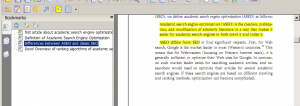
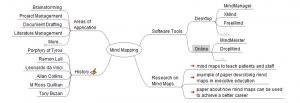
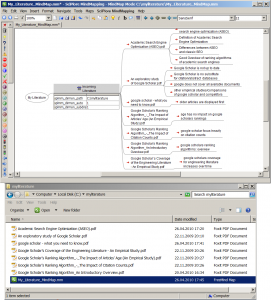
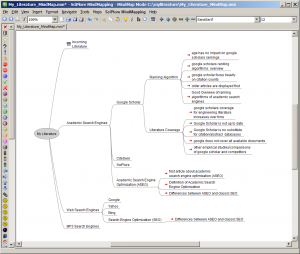
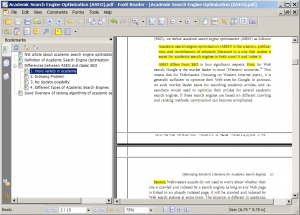

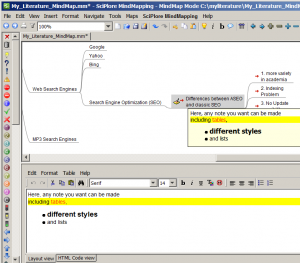
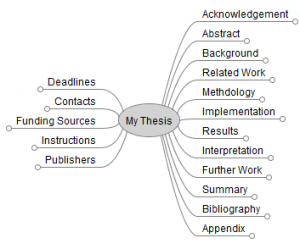
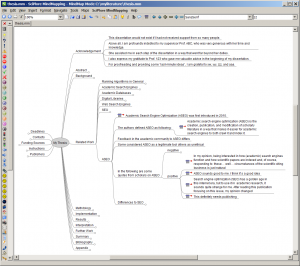
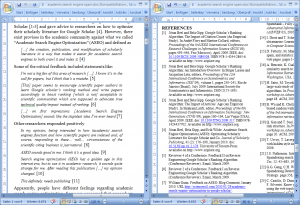
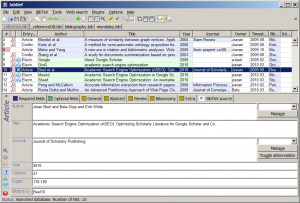
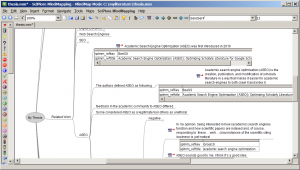
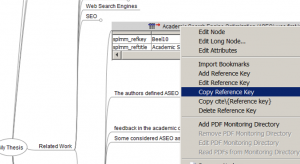
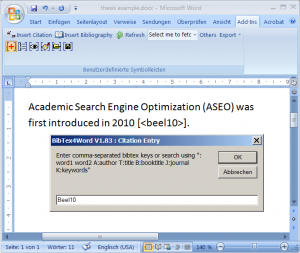
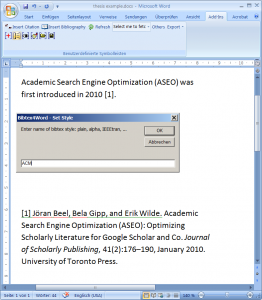
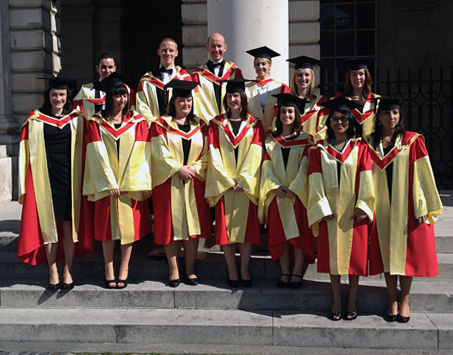
85 Comments
Thea · 16th December 2014 at 10:45
Good tutorial. Centrally focused on electronics aids to writers. Will help students a lot.
Brian Roberts · 4th November 2014 at 10:35
Excellent exposition of critical thinking for students.
Brian Roberts
Emeritus Professor
University of Canberra, Australia
precious · 9th March 2014 at 14:49
hello…please i would like someone to help me with an article containg the APA STYLE. thanks
MJay · 5th March 2014 at 20:00
I am in the middle of my masters thesis and discovered this tool though a Phd forum. It is simple and easy to use for literature management. I am planning to share it with my fellow researcher friends. One question: Is there a back up option in Docear?
Thank you Docear team !
Norman Meuschke · 6th March 2014 at 00:56
Dear MJay,
Thanks for using Docear and recommending it to your colleagues and friends. Indeed, Docear offers the option to backup you mindmaps. All you need to do is to register for a free user account and activate the backup function. Please see Docear’s user manual for details: http://www.docear.org/support/user-manual/#Backup_Versioning.
Best,
Norman
MJay · 6th March 2014 at 15:41
Thank you Norman for the quick reply. I discovered that the online backup option is enabled by default in the preference tab under Online Services in Docear.
I am using Docear on Linux and have a slight problem opening linked pdf files with bookmarks or annotations. I have Foxit reader and PDf exchange viewer install using Wine but they refuse to become my default browsers even after I have made them default by answering ‘Yes’ to the prompts that pop up when I open Foxit or PDFexchange. When I click to open pdf links through Docear, it opens with the default Ubuntu pdf viewer. (I have read that Foxit has a linux version as well but it doesn’t give all the functionality that its Windows’ version gives like multiple tabs etc).
Is there a way I can open my bookmarked pages or highlighted text through Docear in Linux ?
Norman Meuschke · 10th March 2014 at 05:08
Dear MJay,
Please post your question in the Docear Support Forum: http://www.docear.org/support/forums/ (no registration required). The experts at Docear are better capable to help you. Best,
Norman
Norman Meuschke · 13th March 2014 at 00:39
Hi precious,
If your question refers to formatting the bibliography in APA style, you can achieve that by installing the apalike BibTex style (http://ctan.mackichan.com/biblio/bibtex/base/apalike.bst) and using the following style flag in BibTex4Word (assuming you use MS Word): apalike/pluh(
Best,
Norman
Zhang Weiwei · 3rd March 2014 at 17:09
Wow!!!
It matches my imagination. I wonder why I haven’t seen this before……
Thank you so much!!!
Elisha Achieng O · 17th January 2014 at 18:22
This has been a tremendously great eye opener. I never new such platforms exist, until i stumbled upon this online. Keep the good work. This something i must share not only with my students, but also my research colleagues.
Katherine Evans · 27th September 2013 at 09:46
I would like to say THANKYOU.
Li · 15th September 2013 at 06:34
Hello,I am so interested in SciPlore Mindmapping.But I can not find “Update reference keys in current mind map” when I integrated BibTeX (JabRef) with SciPlore MindMapping.I can not any get reference keys from Jabref.
I sincerely expect your reply.
Thanks very much.
Norman Meuschke · 24th September 2013 at 19:00
Hi.
Thanks for your interest in SciPlore MindMapping. The development of our mind mapping software has been transferred to Docear, which is a separate project solely dedicated to advancing the mind mapping suite. Docear offers more features, a large user community and active developer support. We suggest you give it a try.
Best, the SciPlore Team!
Matt · 22nd August 2013 at 09:22
Hello.
I have just gone through the tutorial, and am strongly inclined to adopt the approach you outline as I undertake writing my thesis, but a few questions:
1.I recently purchased the program, PapersApp. Should I entirely ignore that program if I use your suggested approach?
2. I tend to read journal articles in printed form, and have many that I’ve highlighted, etc. I’ve considered reading digital documents and highlighting PDFs, and recognize the benefits of doing so, but haven’t done so yet because I’ve been unsure about which PDF reader to use, and how durable any mark-ups I make to files will be. Additionally, I’ll have to go through all of the papers I’ve read and transfer my highlights to the digital files. Will Foxit Reader (which you recommend) perform essentially the same mark-up and organizational functions as Papers?
Thanks very much.
Norman Meuschke · 24th September 2013 at 19:32
Dear Matt,
I apologize for the late reply and hope my answers will still be useful to you.
Concerning your 1st question:
I am not familiar with the PapersApp and the features it offers. Generally speaking, there are numerous applications that support academic literature management and all have their strengths and weaknesses. So, I can’t tell you which one is right for you. However, to my knowledge, Docear, which is the successor of our mind mapping software, is the only integrated tool for academic literature management based on mind maps. If you would like to use our approach, i.e. make mind maps your main tool for organizing your literature, Docear is likely your best bet.
Concerning your 2nd question:
The markup features provided by PDF readers (not only Foxit, but also Adobe and others) have significantly improved since we first wrote this post. Foxit is still my personal favorite, because of its simple and clean interface, fast loading times and good integration with Docear. PDF annotations (highlights, comments etc.) are stored within the PDF, so they’re as durable or persistent as the file itself. Foxit has a nice feature I haven’t seen in any other PDF reader so far: it lets you export your annotations in a special XML-based format called FDF. Furthermore, Docear allows you to automatically import all annotations you made in a PDF into your mind maps. I hope that answers your questions. I suggest, you check out the Docear suite to see whether it fulfills your organizational needs.
Best,
Norman
Derek · 24th July 2013 at 08:32
This is very timely advice in writing a thesis, thanks for sharing!
Mohamed · 6th January 2013 at 10:52
please suggest me a software which will help me to write references in a Ph.D
Béla Gipp · 22nd January 2013 at 02:07
http://www.docear.org
ALAM · 20th November 2012 at 17:55
Salam ,
I desire to know how to make a questionnaire for my thesis,
Joseph Ayerhan · 11th November 2012 at 17:42
i need it for my paper
md tanweer alam · 22nd September 2012 at 05:19
please suggest me a software which will help me to write a paper/references in a easy way
Muhammad Moiz · 20th September 2012 at 19:46
I am very Happy to review this. it gave me lot of courage. & hve solved my problems.
idris ahmed abaker · 11th September 2012 at 11:23
I am doing my research on the enteric nervous system imaging and 3d reconstruction.I want to get use of this programe
amit rajput · 29th August 2012 at 21:49
i am just starting phd .i find this useful
Stephanie · 28th August 2012 at 02:23
FOR MAC USERS RE: READER WITH NOTES, HIGHLIGHTING AND BOOKMARKING
I noticed Foxit is only available for Windows. I’m new to Macs, but in case anyone else had that problem, you can use the built in Previewer. Sorry if this is redundant, I didn’t want to read through all the messages.
Sunya · 6th July 2012 at 06:59
I am Just starting to write my PhD Thesis. I find the tutorial immensely useful.
Wilbart · 26th May 2012 at 13:30
Hi there, this is a helpful post, this will give ease to those people who are having a hard time writing their thesis. I think we share the same views as well. I created a blog with step by step guide on making a research. Of course they are free, that is why I put it on a blog. If you have time, visit it… http://howtothesis.blogspot.com
Phil · 12th March 2014 at 15:22
Wilbart,
I like you site – and have directed students to it.
But I cannot find it now !
Have you removed it ?
Or is there another link
Please let me know
Phil
qahtan · 27th March 2012 at 15:55
good paper for any student PHD or master
John · 9th November 2011 at 18:29
You might want to check this PrepLit software out for preparing the literature review. PrepLit is a research tool that can search through your PDF collection
and help doing the literature review. It does not just let you search
PDF files with a lot of extraordinary research search options, but
also helps you through the entire literature review process. The
search results can be managed which a lot of carefully designed
features such as: saving, exporting to open with Microsoft Office or
Open Office, ranking, etc. It can make the time-comsuning search
possible and save very big amount of your time. Free license of
PrepLit is available for educational institute, blogger, journalist,
and public speaker. More information on Preplit http://preplit.com
Kurt · 9th November 2011 at 11:46
Hey there!
I am runnign into a problem. I will use a lot of literature sources. The pdfs during my dissertation work will run up in the hundreds at least. So I found it almost unusable when I expanded the folder in the mind map because of the all the pdfs (let alone the additional bookmarks), So what I did was start breaking down the Node : “incomming literature” into sub headings – however when I do this then I assume the path for each individual pdf, that is put into a sub node, has a broken path to the “monitoring folder” which then then creates deadlinks from the pdf to the bookmarks.
I have also tired first structuring my folders on my pc to match the mind map structure I want – but I still get the broken link problem.
Anyhelp? Is there a way to move nodes around (and into newly created ones) within the monitoring folder node?
Zhuang Xuhui · 16th August 2011 at 04:30
Thanks very much.
sanspm · 12th July 2011 at 14:49
And now a question for the community about file management (I’m new at this, so maybe I’m asking the obvious).
I’m using:
– Mendeley because it grabs the metadata and renames the files automatically
– Foxit reader to easily import bookmarks into SciPlore MindMapping
– “Folder Monitoring” in MindMapping, but I want to monitor a folder that contains only the files that I’ve actually read and marked up
I imagine the following, but doesn’t seem very efficient:
1) download files to a folder, e.g.”journal downloads”
2) have Mendeley rename the files and save in “Documents library” in “Mendeley Desktop”; delete version in “journal downloads”
3) open and read the file in Foxit, re-save in another folder, e.g. “read documents”; delete the version in “Documents library”??
Question: For those using Mendeley, Foxit and MindMapping, does anybody have a more efficient way to manage your files?
Thanks for any ideas!!
Joeran · 12th July 2011 at 15:31
Why not doing the following:
1) Download new PDFs to c:allmypdfs
2) Specify this directory as a “watched folder” in Mendeley and create a monitoring node for the same directory in the mind map. That means you will have all your PDFs in Mendeley (with the correct meta data) and in a node in a mind map
3) Double click PDFs you want to read in your mind map. They will open in Foxit Reader. Create comments and other annotations
4) Import the annotations to the mind map, sort them, remove the link to the PDF from the monitoring node in the mind map. Then you will have all your other unread PDFs in the monitoring node left and the read PDFs in the other nodes of your mind maps.
Of course, on your hard drive everything is in one folder, but does this matter?
sanspm · 12th July 2011 at 13:59
Hi, I have a few questions related to the “monitoring folder” function:
1) what’s the difference between “smart” and “thorough” update of monitoring folder? I deleted some pdfs from the folder being monitored as a test and even after trying the “thorough update” the information from the deleted files remained – I expected data from deleted files to have also been deleted.
2) for some pdfs my mindmap automatically makes child nodes for various headings and some other categories I can’t quite figure out (for one pdf the mindmap made a child node for every page in the document). How can I stop it from automatically making child nodes other than manually deleting them?
Suggestions:
1) add a section in the help mindmap on monitoring folders and on reference management (some information is on the web-based manual, but there is nothing in the mindmap itself.
2) you use the term “monitoring directory” in most places and “watch folder” in one instance, but then in the mindmap software it’s actually called “monitoring folder”; consistency in the terms would probably be helpful when people are searching for information
Joeran · 12th July 2011 at 15:23
what’s the difference between “smart” and “thorough” update of monitoring folder?“smart” checks the file date (last modified) of PDFs and compares this to the date of the mind map. only PDF being modified later than the date of the last incoming folder update are analysed.
“thourough” checks all PDFs for bookmarks which might take a long time.
I expected data from deleted files to have also been deleted.this will be possible in one of the next versions of SciPlore MindMapping (Docear). However, I would appreciate if you could post your wish here http://docear.idea.informer.com/ too
2) for some pdfs my mindmap automatically makes child nodes for various headings and some other categories I can’t quite figure out (for one pdf the mindmap made a child node for every page in the document). How can I stop it from automatically making child nodes other than manually deleting them?in the menu select “SciPlore MindMapping – Preferences – PDF Management”. There you can select which kind of annotations to import. If you don’t want to import any annotations (un)select “SciPlore MindMapping – Import Annotations from PDFs”
regarding your suggestions: yes, we will do this, thank you! If you have any further questions feel free to use our new forum http://sourceforge.net/apps/phpbb/docear/index.php
Gretchen · 31st March 2011 at 03:42
I’m not sure I completely understood the process described here. From what I understood:
First, you make a mindmap of the literature you collected and organize it by topic perhaps. Then, you make a second mindmap more according to how you want the paper/arguments to build up. I guess what I don’t understand is how the second mindmap works (in general, I do understand mindmapping). Do you copy nodes from the first map? What if I just want the bookmark, when I copy it to the new mindmap will the bibliographic info come along with it?
I hope you can answer my questions/confusion, and thank you in advance.
Joeran · 31st March 2011 at 09:56
eventually it`s up to you. if you have just a “small project”, e.g. a bachelor or master`s thesis you could do everything in a single mind map. if you have a larger project (e.g. a phd and several additional papers) you might want to use two mind maps. one for the literature management and one for each paper. and yes, you can just copy nodes (and bookmarks) between mind maps and reference information will be kept.
jöran
Gretchen · 1st April 2011 at 03:59
Joeran,
Thank you for your reply – and after using the maps, I realized I already had the answer to one of my questions.
By the way, I’d like to mention that I agree with Michael (Oct 2010) #2, that it would be handy to have the option when updating bookmarks to choose between “all” and “new” (currently all are imported again).
Thanks again!
Joeran · 1st April 2011 at 12:03
right click on a bookmark and select “PDF Management -> Import new bookmarks” – this should import new bookmarks only.
kamran · 29th March 2011 at 22:32
I installed the SciPlore, but when i start it, i get this message :”freeMind.Main.freeMind cann’t be started” !
What shold i do? Help plz
Joeran · 30th March 2011 at 14:37
have you installed the latest Java version from http://www.java.com ? if you still have this problem please contact us at feedback A.T sciplore. org and tell us your operating system
Benjamin Ryba · 3rd March 2011 at 17:33
Hi, really nice and helpfull programm. I have a question and maybe an idea for new implementation:
1. I use the latest version (14 Beta) but the bookmarks don’t really guide me to the correct page. I always get to the starting page of the PDF. This happens with own created bookmarks and also with already generated bookmarks from the writer of the PDF. (I use foxit reader)
2. In my opinion the mindmap structure is prefered to use it with LaTeX. If there’s a way to export the different nodes with downwardly used sections similar to LaTeX (chapter/section/subsection …), an easy, first usable text could be generated. The whole formatting for the text have to be done in the header of your writings so you don’t have to think about. you just have to export in a .txt. Maybe one have to define what is “text” and what are headlines. Do you tink that could work?
Thanks so far.
Greetings
Joeran · 3rd March 2011 at 18:23
hi benjamin,
the feature to jump to the bookmarked page is not yet implemented. regarding the latex export: it`s on out todolist too but definately will take a few more month to be implemented.
Andrea · 17th January 2011 at 22:40
Hi, this is a great blog and extremely helpful however I have a quick question about using JabRef to cite things in MSword. I followed the instructions to use my JabRef citation database with MSword but am having trouble getting the citations in the form I would like. I need to cite according to American Sociological Assocation standards and can’t seem to find a format file that works. The furtherest I have gotten is going to the package manager in MikTex and downloading packages that are suppose to contain new formats. Is this how I should be doing this and if so do you know of a packages for ASA citation.
Thanks!
Joeran · 1st February 2011 at 13:44
I am sorry but I don’t know any packages that contain an ASA citation style but I am very sure that there is one. Maybe you could ask here http://www.medicalnerds.com/how-to-use-jabrefbibtex-with-microsoft-word-2003/ or the guys from miktex: http://miktex.org/support
If you find an answer, feel free to post it here.
Anna · 4th January 2011 at 16:13
Hi, this sounds great. I have already started writing my PH.D. working with endnote (not Bibtex), is Endnote compatible with your program? Or is there a way how I can move my reference-files to your program? Thanks!
Joeran · 10th January 2011 at 19:29
sciplore mindmapping is not compatible with endnote. and if you google, switching from endnote to e.g. jabref seems to be difficult. if you find an easy way i would be very happy if you told me and i would publish it on our blog
Jair Wen · 16th December 2010 at 08:12
Hello, I tried SciPlore on the Mac OS X 10.6.5. It seems can not load highlight markers from pdf modified by Acrobat X in the same system. However, bookmarks are imported smoothly.
Joeran · 18th December 2010 at 09:39
currently, sciplore only imports bookmarksand no comments or highlighted text.
Cindy · 2nd November 2010 at 03:36
I Love YOU!!!
Michael · 30th September 2010 at 18:32
Hi.
Another thing:
It would be nice, if one were able to select the PDF viewer that is used by Sciplore to open the PDFs. I am working in Linux and used Wine to install the “Foxit Reader”, which does work great.
Nonetheless I don’t want it as my default viewer for the whole system, as it’s not part of Linux and it takes long to start up. I’d prefer just starting “Foxit Reader” from inside JabRef and Sciplore for adding bookmarks and else use the default viewers from Linux.
Is there any way this is possible?
Best regards and thanks again,
Mike
Joeran · 2nd October 2010 at 18:17
I also added this suggestion to our todo list. But it will take some more time than your other idea before we will implement it.
jpz · 28th July 2011 at 12:24
——— PDF-Xchange + Wine = bookmarking PDF reader in SciPlore under Linux ———
Hi all,
I found this workaround which may be useful to Linux users that want to use a bookmark enabled PDF reader within SciPlore.
1) download the free version of PDF-Xchange, (a viewer that allows bookmarking and has a very nice search tool) from here:
http://www.tracker-software.com/product/pdf-xchange-viewer
2) install PDF-Xchange so it runs under Wine
3) Copy the following lines, paste them to a text file and save it as PDF-Xchange.sh or something similar.
———————————–Copy from line below ———————————————
#!/bin/bash
# Purpose: To convert Linux-style filename to Windows-style to pass as an argument
# to wine when starting PDF Reader
Filename=${1////\}
#assuming you use the default installation folder in Wine
App=`eval wine “‘C:Program FilesTracker SoftwarePDF ViewerPDFXCview.exe'” “‘$Filename'”`
$App
———————————–Until line above ———————————————
path to PDF-Xchange executable may be different, check it for your system..
4) Change properties of the script you just saved to make it executable
5) In SciPlore open “preferences” under ‘tools” menu to open the Freemind properties window and click on the HTML tab/button
5) Go to the input box labeled “Default Browser Command Other Os” and replace the text “xdg-open {0}” with “dir-where-u-saved-yr-script/PDF-Xchange.sh {0}”
6) Click Save in the Freemind properties window. Sciplore will prompt you to restart to enable the changes but this was not necessary for me.
Now when you click on a PDF in your mindmap it will be opened with PDF-Xchange!
The script is a modified version of a Foxit script found here:
http://sodeve.net/2007/12/foxit-reader-on-ubuntu-linux-through-wine/
However Foxit would not work within Scilore in this way, failing to open the pdf, although it worked within Nautilus (the Gnome file manager)
Both work fine with PDF-Xchange though!
Good luck!
Michael · 30th September 2010 at 18:27
Hi.
I just recently stumbled upon Sciplore Mindmapping and I love the idea. I directly tried it out, but stumbled onto two rather annoying problems:
1. When I select a directory (along with it’s subdirectories) to monitor my PDFs and import them, they are re-imported at each start-up. As a result I end up with the entries being duplicated EVERY time.
2. The second thing is perhaps not so much a problem than a question:
Assume I already have a PDF and with it’s bookmarks imported into a mindmap. Now if I add more bookmarks to that PDF is it possible to just import the added bookmarks. I didn’t find an “Update Bookmarks” option and if I do “import bookmarks”, it imports ALL the bookmarks, which is unnecessary and if the PDF has many bookmarks very annoying…
I hope somebody can help me with this as it is kind of putting me off from reallying digging into Sciplore and doing everything with it.
Thanks and best regards,
Mike
Joeran · 2nd October 2010 at 18:14
regarding 1: this definately is a bug. i have sent you an email.
regarding 2: thx for the suggestion, i added it to our todo list. maybe we will have implemented this in beta 13
Michael · 4th October 2010 at 15:50
Hi.
Unfortunately I didn’t get your email regarding the bug.
Perhaps you could send it again?
Thanks,
Mike
Joeran · 5th October 2010 at 11:03
I sent it again (maybe it’s in your spam folder?). Anyway, ths is what I wrote:
Are you sure you are using the latest beta 11 from our website
http://www.sciplore.org?
If so, please could you send me the mind map this happens with? or
ideally, create a new and simple mind map in which this problem
occurs and send this to me.
A_Rauf · 24th September 2010 at 12:29
ohhh…I was really lagging behind in terms of my Master dissertation….and now with this I am very hopeful to meet the submission deadline.. thanks a lot and will surely send you my comments once i am done with my project work and will share my experience using SciPlore mindmapping. Great service by all developers and their team. congratulations.
msel · 22nd September 2010 at 09:19
For mac (also for windows and linux) you might use the program jpdfbookmarks. I’ve just try it in a windows environment. This program can also be used in a mac environment because it is written in java.
https://sourceforge.net/projects/jpdfbookmarks/
Another good alternative for windows is PDFX-Change Viewer. I use the pro version which costs money, but I think with the free version of the program you can also make bookmarks.
http://www.tracker-software.com/product/pdf-xchange-viewer
Joeran · 23rd September 2010 at 17:14
thank you very much. i will have a look at the websites
Dima · 10th August 2010 at 22:11
Any hints, how I can create bookmarks on mac, besides Adobe software? Apparently there is no Foxit Reader for Mac.
Joeran · 11th August 2010 at 16:43
no sorry, I only know of Adobe Acrobat for Mac. If you find an alternative, please tell me.
Melanie · 27th September 2010 at 19:30
I don’t know if you are still checking back to this site, but the latest version of preview (s/w standard on mac o/s) does bookmarking and highlighting.
gsagri04 · 10th August 2010 at 16:50
This is great article and software too.. I am using freeplane for mind mapping- basically to organize whatever I understood from research article. But this software seems to be good for researcher like me. It is hard to organize PDF when collection become huge. Thanks for the great software not only similar to freeplane but also supports Mendeley- one of the best PDF organizing software. I thank the developer for making good software for researches (nobody bothers about researchers, one who bothers makes money- was slogan with reference to Endnote or VectorNTI ).
Thanks
Craig Embleton · 23rd July 2010 at 09:19
Hello
The in (wordprocess) text references are given as numbers that refer to the bibliography references. Can this tool enter in text references in the Harvard format of (Author, date)?
Thanks
Joeran · 5th August 2010 at 11:35
SciPlore MindMapping does not directly create reference lists. Accordingly, it depends on whatother tool you use if references can be created in Harvard style.
sangeeta · 17th May 2010 at 19:17
how to delete Map and what is reference key.
Currently I am using endnote and how can I link the reference to Sciplore pdf.
Also, is it possible to get the pdf into one folder with a click from each reference in endnote rather rafting each reference to copy it.
thks
Joeran · 18th May 2010 at 23:42
endnote is currently not supported by SciPlore MindMapping and we have no intensions to change that.
Tim Olsen · 7th May 2010 at 23:32
Thanks. This is fantastic. I was just thinking how valuable it would be to have this… and then I found you on wikipedia.
One question. I have a PDF that already has a ton of bookmarks in it (a dissertation) — What’s an easy way to remove those, so I can start fresh?
Joeran · 7th May 2010 at 23:52
you can delete bookmarks in a PDF e.g. with foxit reader. alternatively create a node in your mind map (e.g. “trash”) and move the imported bookmarks into that node. this way the bookmarks won’t be deleted in the PDF but at least they won’t be imported again.
mrslucy · 5th May 2010 at 18:25
i found this tutorial two month ago, tried sciplore mindmpping, and finished my literature survey for my BSc yesterday. Your software is awesome! awesome! awesome! It helped me so much! Thank you!
martina · 4th May 2010 at 02:51
does there exist also a german version of this tutorial?
Joeran · 4th May 2010 at 03:01
no sorry, there is no german version of this article.
DEHarry · 16th April 2010 at 10:50
I am just about to start my PhD. Thank you very much for this tutorial, it is really helpful and on first glance sciplore mindmapping looks great!
Linux · 18th March 2010 at 16:36
I can’t find a PDF reader to create bookmarks with Linux. Any hints?
Joeran · 20th March 2010 at 19:11
the latest version of foxit reader can do this. read here http://www.docear.org/support/user-manual/#Foxit_PDF_Viewer
Tux · 17th July 2010 at 03:33
KDE’s Okular can insert bookmarks and highlight text. It runs on GNOME too. Both KDE and GNOME can coexist on a box Ubuntu.
ooolavr · 10th August 2011 at 04:19
As appeared somewhere on this site as well as on the Web, jPDFbookmarks is IMHO the most appropriate and established software for embedding bookmarks and notes into PDF files on Linux.
Okular is a nice allowing to visually add bookmarks, highlights and notes to the PDF file BUT those are linked with current user only so can’t be transferred and get visualised on other computers, that is, Okular stores all those modifications in the user’s home dir, not in the PDF file itself.
How to perform research in areas of built environment | Indiansherlock · 6th May 2013 at 19:33
[…] [1] http://sciplore.org/2010/how-to-write-a-phd-thesis/ […]
Dissertation Literature Sources · 29th September 2011 at 20:38
[…] […]
Knowledge management « Eikonal Blog · 14th December 2010 at 22:12
[…] “How to write a thesis (Bachelor, Master, or PhD) and which software tools to use” – http://isg.beel.org/blog/2010/03/02/how-to-write-a-phd-thesis/ […]
Advice on doing my literature review · 7th December 2010 at 03:33
[…] […]